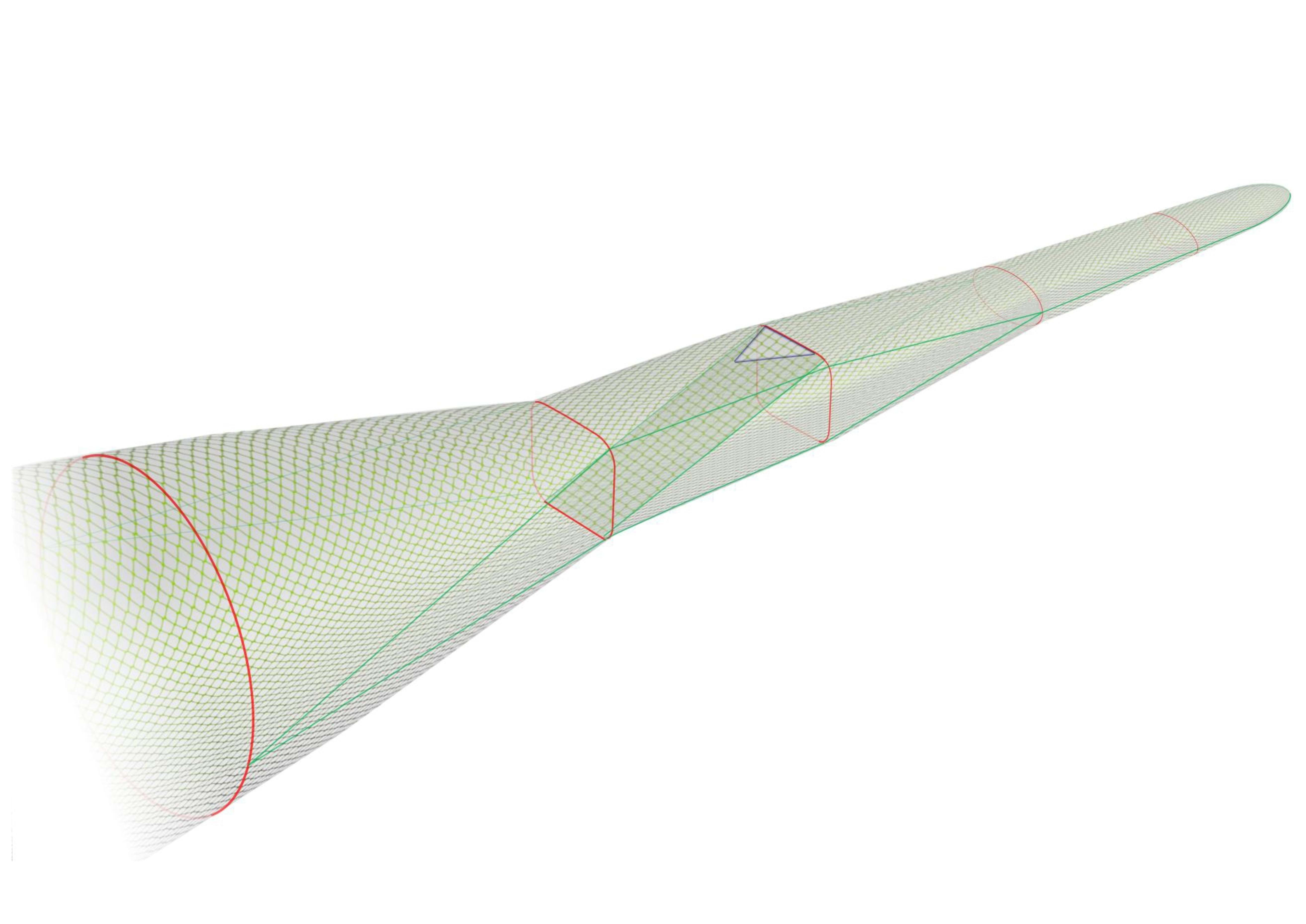Cefas Net Grid
Summary
The Cefas Net Grid is a selective device designed to separate nephrops from fish. It is an inclined panel of square mesh that directs fish upwards and out through an escape hole in the top of the net, while allowing nephrops to fall through the square meshes and into the lower cod-end.

Size selectivity
Using various different mesh sizes for the square mesh inclined net grid this gear has proved to be effective at separating nephrops from fish in several fisheries around the UK.
In the Farne Deeps nephrops fishery, 200mm square mesh was used while in North East Scotland 400mm mesh was found to give the better results in the twin rig fishery with its greater percentage of fish in the catch. To retain much of this fish catch the Amity version of the net grid with two cod-ends was used. The size of mesh used for the net grid needs to be adjusted to suit different fisheries to ensure best results. In different fisheries the behaviour and the mix of fish and nephrops may be different and it seems that this can affect how they react to the net grid.
In the trials in North East England, the net grid reduced the total fish bycatch in the trawl by as much as 63% while retaining almost all of the nephrops. In the trials, the net grid was most effective at reducing the numbers of cod 65-75%, whiting 85% and haddock 90%.
In the CEFAS net grid the fish by-catch are directed straight out through the fish release hole, without ever entering the cod-end, therefore almost all of them should survive.
There should be a noticeable improvement in the catch quality when the gear is hauled when using the CEFAS net grid. Due to there being less bulk in the cod-end there is less damage to the nephrops. What few fish are in the cod-end should also be in better condition. There may also be a slight increase in the nephrops catch, because there is less bulk in the cod-end the meshes are not getting forced open as much which results in less loss of nephrops from the cod-end. These trends are seen in any nephrops trawl where the fish are kept out of the cod-end such as coverless trawls separator trawls and the Amity style of net grid.
In some fisheries where by-catch may form a large proportion of the value of the catch the Amity version with the second cod-end to retain the larger fish may be the better option to use.
Other information
The early versions of this design had plastic poles to keep the net open vertically. After initial trials these were dispensed with as they were not working as expected. The net was redesigned into a simpler version where the standard two-panel net was converted to a four-panel section by adding wedge shaped side panels. This gave a parallel four-panel section of approximately four metres in length with each side of equal width. This enabled the inclined net grid, made from square mesh, to be easily fitted at the desired angle by lacing it up a line of bars in the netting in each side panel. The leading edge of this panel is attached across the lower panel of the net.
In some designs there is a section left unattached in the centre of the leading edge to permit the passage of monkfish, halibut etc. and seabed debris to pass directly into the cod-end. The net grid panel slopes upwards for the full length of the parallel section with the top end of it being attached right across the upper panel. Just ahead of this point a triangular fish release hole is cut.
It is presumed with each horizontal transverse bar of the square mesh being behind and slightly above the previous one they act as a guiding device, guiding the fish upwards as they come to each bar, then pass along and up the inclined panel and out through the fish release hole.
Meanwhile the nephrops, that appear to just ‘tumble’ down the trawl with the flow of water, will pass through the inclined square mesh panel and fall into the cod-end, thereby effectively separating the nephrops from the fish and releasing the fish.
This style of selective gear should be able to be adapted for use in any trawl. Although it is possible that the four-panel section could be attached directly to the existing two-panel net it is advisable to alter the section of the trawl ahead of the net grid into an adaptor section including tapered include side panels to transfer the net from two to four panels.
It is an accepted fact that there is a tendency for a two-panel net to form a flattened oval cross sectional shape whereas a four-panel takes up a much more open shape that gives the fish more room to swim in and allows the net grid to work better. If there is not an adaptor section fitted there can be a tendency for the two-panel to influence the four-panel and close it up slightly. Same is true of the back end of the panel; there should be an adaptor section to return the net to a standard two-panel cod-end. Alternatively, the four-panel section can be continued and allow a four-panel cod-end to be fitted, which may further improve the gears selectivity.
Caveat
All dimensions, mesh counts and cuts are for generic advice and information. Before constructing or fitting this gear into a trawl you should consult with your local fishery officers or legislators such as MMO, Marine Scotland and Daera in the UK. This should ensure that your gear meets the requirements of the area that your vessel will be fishing in.
Selection type
-
- Post-selection